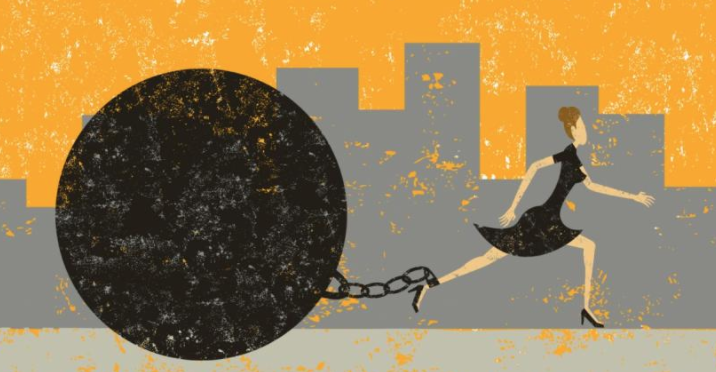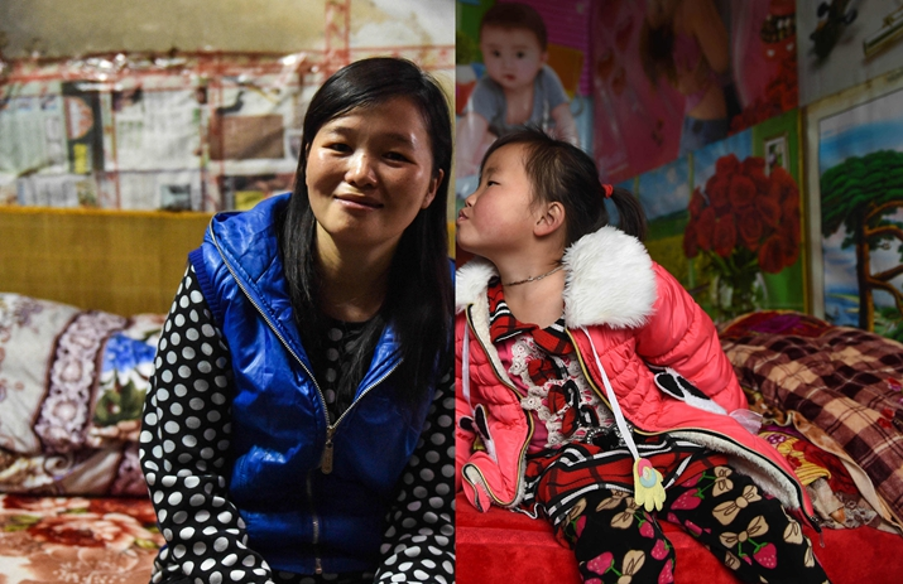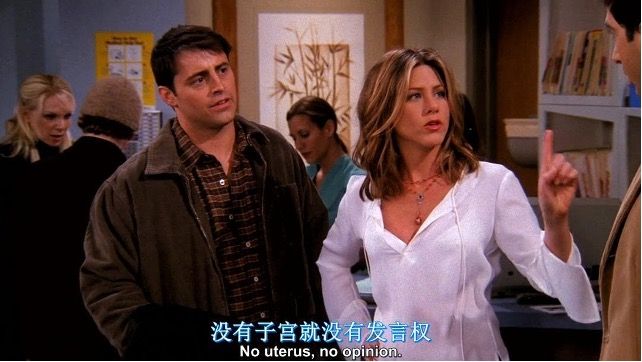No womb, no voice

Text|Yoshi
On May 31, 20 days after the release of the seventh national census data, the population policy of fully opening up to three children was officially introduced. The fertility rate is closely related to social and economic development, and the opening of three-childhood is considered to be a population policy adjustment made in response to the current low fertility rate. There is a whole set of economic and social operating mechanisms behind the fertility rate, which have been discussed by most of the affairs agencies in terms of labor rights, women's rights, and pension issues . Among the many focuses, women's dilemmas and choices on fertility issues deserve particular attention.
A Dilemma: Fertility and the Punishment of Motherhood
In modern society, women are engaged in the dual labor of material production (production) and social reproduction (reproduction), that is, on the one hand, women devote themselves to social and economic life and engage in paid labor; Social Reproduction Responsibilities. "Motherhood punishment" refers to the interruption of a woman's career, lower income, and reduced opportunities for promotion due to childbirth. Because of the prevalence of maternal punishment, many women have to make a choice between career development and childbearing; correspondingly, in choosing a career, a spouse and other life choices, many women will also consider the possible risks of maternal punishment. among. After the announcement of the three-child policy, many netizens responded that "women are more difficult to find jobs" and "enterprises will not hire women anymore", which shows that people's concerns about the punishment of motherhood are widespread.

Motherhood punishment is a direct manifestation of gender inequality. First of all, within the family, under the default gender division of labor that "males are outside and females are inside", women need to invest a lot of energy in parenting and housework, and the investment in other things will inevitably decrease. According to a data report by the All-China Women's Federation and the National Bureau of Statistics in the 2010 "Third Survey of Chinese Women's Social Status" (the fourth survey of Chinese women's social status in 2020 has not yet been released), the income of married women reaches the 40% of their income, but they undertake 70% of housework; unmarried women work 13 minutes less than men, but married women work 39 minutes more than men, which includes paid social work Economic and often unpaid housework; urban women work 79 minutes more than urban men on rest days. The social buzzword "widowed parenting" directly points out the lack of fathers in raising children and the multiple labor that mothers may face.
Secondly, in the overall consciousness of society, the concept that "women's duty is to raise children" still exists widely . The most obvious manifestation of this is that many unmarried and unmarried women are punished by motherhood in advance in the workplace. For example, there is widespread gender discrimination in graduate recruitment, female applicants are asked about their personal emotional status, married women without children Career advancement is reduced, etc. As a woman, no matter how she plans her life and career path, in the eyes of enterprises, her sub-officers may increase labor costs. Simplifying women into wombs and linking women's values with fertility is the most direct manifestation of patriarchal culture still leading society.
Finally, it is the gender-unfriendly national policy that does not provide adequate protection for women's rights . In the absence of social security, profit-oriented companies often choose employment discrimination and illegal termination to avoid the possible increase in labor costs for female employees to give birth. Xu Qi from Nanjing University studied the impact and trend of childbirth on the wages of male and female employees . In the late 1980s, women's wages were not significantly negatively affected by childbirth. With the advancement of the market economy, by 2015, every child born , women's wages fell by about 30%. In response to a reporter's question on the implementation of the three-child birth policy, the National Health and Health Commission also clearly pointed out that "34.3% of female workers' wages dropped after giving birth, and 42.9% of them dropped by more than half." Who will compensate for the increased labor costs of women giving birth? In the process of corporate and national policies playing the ball against each other, individual women have become the bearers of the consequences of structural inequality and imperfect social policies.
At the same time, motherhood punishment will also exacerbate inequality in other dimensions, the most direct being the intersection of gender and class. Urban middle-class women, especially only daughters, often have the help of their parents and child-raising sister-in-law, which can minimize the impact of motherhood punishment; while migrant women, especially labor women, have a much higher cost of childbirth, and many of them can only return to their families. . Even if they choose to continue to work after giving birth, whether to keep their children in their hometown is a problem they must face. In Rachel Murphy's new book, The Children of China's Great Migration, Oxford University, through fieldwork in Anhui and Jiangxi, Murphy finds that mothers of left-behind children feel deeply guilty for not being able to accompany their children, while the absence of fathers is taken for granted. While working to earn money to support the family, isn’t the higher emotional cost of motherhood another form of motherhood punishment? In addition, when urban middle-class women evade the punishment of motherhood by commercializing motherhood, many childcare sisters work alone in big cities, and their time with others and personal leisure time is exploited.

Motherhood punishment is a global problem, and in popular culture, women who can juggle career and family become the perfect female image. Take Sheryl Sandberg's autobiography, "Lean In," for example, which combines business success and family happiness. Sandberg is certainly a representative of successful women, but at the same time, the shaping of this female role model is to place the responsibility for solving the punishment of motherhood on the individual. It seems that a woman can't balance career and family because she is not capable, because she is not good enough. It's her own fault. The Internet economy has created another myth, that women who quit the workplace can make up for the punishment of motherhood by becoming bloggers and opening online stores at home, and even achieve greater economic success. However, these example-constructed myths all follow the logic of neoliberalism: all right and wrong, success and failure, happiness and misfortune depend on individual effort.
In short, on the issue of fertility, women are faced with the dilemma of accepting the punishment of motherhood. What is worse, the society does not consider this dilemma to be a dilemma, but takes it for granted, leaving women to bear it independently.
An Interlude: Discussion on the ratio of males and females in Northeast China
After the results of the seventh population census were announced, Jilin and Liaoning both had more women than men, while Heilongjiang was relatively flat. For a time, the argument that "gender equality in Northeast China is more equal" became popular on the Internet. On the one hand, some people object to this argument. Because of the economic decline in the Northeast region, the labor force, especially the male labor force, is exported in large quantities. In addition, the elderly stay in the local area, and the average life expectancy of women is higher than that of men. The data on the ratio of male to female has no direct relationship with gender equality. On the other hand, in the data of the seventh census, the sex ratio at birth was 106.3 (that is, 100 girls were born on average, and 106.5 boys were born), which is within the normal value set by the United Nations of 103. -107, compared with the national average of 111.3. From the perspective of gender at birth, the gender equality in Northeast China is not entirely groundless.
In discussions on gender equality in the Northeast, what cannot be avoided is the legacy of the industrialization history of the Northeast. Until the late 1970s, Northeast China, which was an industrial base during the social construction period, was leading the country in terms of economic development, urbanization and population quality. During the process of industrialization, women left their families and entered factories, and many of the reproductive labor undertaken by women in the family was shared by public nurseries and public canteens. The idea behind these practices is that reproductive labor is given social value, and that childcare and household chores are not exclusive to women, but labor that needs to be undertaken by society. From the perspective of socialist feminism, only when the state recognizes the value of reproductive labor can women break the traditional gender division of labor, participate in social and public life on an equal footing, strive for equal rights and develop their potential. Coupled with the dependence of people on the system during the industrialization period, the Northeast family planning policy has been implemented to a high degree, and the only-child generation has accepted the infusion of family resources, which has greatly promoted gender equality.

Here, reviewing history does not mean that the historical practice can be copied or has no flaws. After all, the thinking of men outside women inside has not changed because of industrial construction to a large extent, and the gap between urban and rural areas has not eased. With the collapse of the collective economy, female laid-off workers are faced with multiple hardships from their families and society (refer to the previous article "Northeast Female Workers in 'Going to the Sea'" ). However, the discussion on the ratio of males and females in Northeast China in the Seventh Census can give us the most direct inspiration that sharing reproductive labor is the most direct way to reduce the punishment of motherhood. This sharing requires the support of public policies and the equal participation of men in reproductive labor. With the implementation of the market economy, enterprises and institutions have "reduced the burden", and reproductive labor has been privatized and marketized. When the reproduction labor returns to the family, supplemented by the traditional concept of husband and child education and the popular discourse of "femininity", women once again become unpaid reproduction laborers. When people discuss whether women should "return" to the family, the word "return" tacitly assumes that women belong to the family. Today, the women of the only-girl generation have entered society one after another. After leaving the relatively equal school environment, gender discrimination in the workplace and the patriarchal culture in the marriage and love market have caused great oppression to them who are pursuing personal growth and development. More and more It is difficult for young women to accept giving up their careers for their families, which may be one of the reasons why gender issues in the Northeast have attracted so much discussion.
In the history of feminist development in China, from the new cultural period to the industrial construction period represented by the Northeast, independent women have always been connected with professional women. Today, "whether to be a stay-at-home mom" is often given the name of free choice. For elite women, "full-time wives" have been portrayed in popular culture as affluent and laid-back socializing people with luxury handbags. However, in real life, although basic housework can be outsourced, their lives may still be full of stress: class distinction-oriented education causes mothers' "chicken baby" anxiety, and they need to pay a lot of emotional labor to maintain the relationship between husband and wife and family relations; for more ordinary working-class people, they can only rely on their parents or mothers to give up their jobs if they do not have enough financial capacity to ask for housekeeping services. All of the above can only be discussed under the premise of a stable marriage. of. In real life, if a woman leaves the workplace for two to three years, the difficulty of returning to the workplace is self-evident. Without the support of the social system and the culture of gender equality, women are coerced by the discourse of "mother's love". In this context, are women's choices really "free"?
A rebuttal: Fertility and women's rights put the cart before the horse
Among the supporting policies and measures to fully open up the three-child policy, "protecting the legitimate rights and interests of women in employment" was only taken lightly at the end of various opinions, while "strengthening the education and guidance of marriageable young people's concept of marriage and family, and preventing bad marriage habits" "Governance of bad social ethos such as astronomical betrothal gifts" appeared first. This way of wording implies that the low fertility rate is attributed to the concept of marriage, love and fertility among young people, especially young women, and that the "bachelor" problem caused by the gender imbalance between men and women is attributed to the bride price. The wording of the entire three-child policy ignores the structural oppression of women at home, in the workplace, and in society. Instead, there is a tendency to attribute the fault to young women. Such misogyny is also a spectacle.
Many commentary articles about three children focus on work pressure under 996, which reduces young people's desire to have children, high education costs make it difficult to raise children, and the opening of three children will only widen the class gap. These views are not wrong. However, none of them started from the standard of women's rights. As if giving birth, women should be in a subordinate position. But in fact, if both husband and wife face the work pressure of 996, choosing to have children will definitely make the wife change jobs or even resign; the so-called high education cost is formed by competition within the deformed class. In addition to paying high fees for elite education today, It requires a lot of time, energy and emotional effort from parents, and most of these efforts undoubtedly fall on mothers; while paying attention to the future expected consequences of opening up to three children, it is also necessary to pay attention to the current actual situation of rural women and migrant women workers. The popularity of feminist topics in 2009 has not diminished, but their voices are often obscured.
From the opening of the three-child policy to many analyses, one of the biggest problems is that fertility and women's rights have been put upside down. It seems that the protection of women's rights and interests is set up for childbirth, not because women's rights and interests themselves have not been given due attention and promotion. The irony is that when it comes to fertility, women are often referred to as subordinate uteruses. What's more, directly attributing the low fertility rate and the low willingness of young women to have children to "feminist brainwashing" is entirely the wishful thinking of men in power. After all, blaming women is more important than acknowledging that state policies and public services are not in place. Much easier and "correct".

In fact, studies in developed countries and regions have shown that feminism and fertility may follow a J-curve, that is, when gender equality is accepted by social policies and ideas, fertility will start to rise instead. The best example is Sweden: considered the most gender-equal, ie, most feminist, country in the world, Sweden has one of the highest fertility rates in the developed world. Sweden's fertility rate in 2018 was 1.8 , compared with 1.3 in China's seventh census. While providing childcare benefits and public childcare, Sweden has always advocated for women's equal access to education, equal employment and equal participation in political life. Compared with Sweden, although the governments of Japan and South Korea have been trying various measures such as childcare subsidies, tax incentives, housing benefits, and extended parental leave in recent years, the birth rate has not been improved. Of course, in addition to the overall backwardness of gender equality in East Asia, Japanese and Korean societies also generally advocate "work supremacy", and workers feel that they cannot raise children. Looking at the world horizontally, what we need is to fundamentally identify with the concept of gender equality, and we need more women and feminists to participate in public decision-making, so as to eliminate the punishment of motherhood in the social system, instead of thinking about how to solve the bachelor problem, how Taking women out of public life and how to turn women into reproductive machines.
Now, the voices of young women being infertile are getting louder and louder. This kind of personal resistance is a self-defense of women who cannot change the structural oppression, and cannot influence the national policy and the mainstream concept of society. People should understand that the low birth rate is not because of "too many women's rights", but because of "too little women's rights".
Like my work? Don't forget to support and clap, let me know that you are with me on the road of creation. Keep this enthusiasm together!

- Author
- More